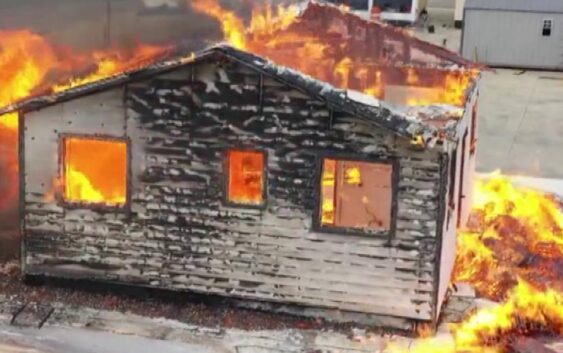- Seven months after Hurricane Helene, Chimney Rock rebuilds with resilience
- Wildfire in New Jersey Pine Barrens expected to grow before it’s contained, officials say
- Storm damage forces recovery efforts in Lancaster, Chester counties
- Evacuation orders lifted as fast-moving New Jersey wildfire burns
- Heartbreak for NC resident as wildfire reduces lifetime home to ashes
Cutting-edge wildfire research shapes future building codes and safety plans

A Chester County organization is working to prevent catastrophes by reducing the impacts of future wildfires.
RICHBURG, S.C. — As wildfires ravage Southern California communities, a South Carolina research facility is working to prevent future catastrophes through advanced testing and firefighter education.
The Insurance Institute for Business & Home Safety (IBHS) in Chester County operates a unique facility capable of recreating extreme weather conditions, including wildfire ember storms.
“We have a capability that doesn’t exist anywhere else in the country, where we can recreate wildfire ember storms and use them to attack fully built homes,” IBHS CEO Roy Wright said.
The institute’s research focuses on multiple aspects of building safety, including extensive data on how flames spread between neighboring structures.
“We look at the spacing between buildings, landscaping and decks, eaves and attics, windows and siding to truly understand how we narrow the impact of wildfire,” Wright explained.
Recent studies at the facility monitor fire spread patterns, providing critical data for California’s ongoing wildfire crisis. The research directly influences building codes and insurance policies nationwide.
Over the past decade, wildfire losses have totaled $5.1 billion. While California faces extreme conditions, the threat extends beyond the West Coast. North Carolina reported over 40 wildfires last year alone.
IBHS actively collaborates with various stakeholders, including insurers and local governments to ensure homeowners are prepared for these disasters.
“We’ve been working with public policymakers, local officials, towns adopting ordinances, and fire services,” Wright said. “We do a tremendous amount of education so homeowners know what they should do.”
The nonprofit maintains that improving building codes and installation guidance will reduce future losses as communities face increasing wildfire threats.
Myles Harris at mharris5@wcnc.com and follow him on Facebook, X and Instagram.